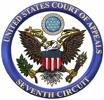Gu Kailai Trial and China’s Rule by Law
 On Thursday, August 9, 2012, in China’s Anhui province, the murder trial of Gu Kailai, wife of a high-profile former Communist Party official, for the murder of British businessman, Neil Heywood, ended after seven hours. The trial is regarded as the highest profile political trial in decades, Gu Kailai being the wife of disgraced former Communist Party official Bo Xilai.
On Thursday, August 9, 2012, in China’s Anhui province, the murder trial of Gu Kailai, wife of a high-profile former Communist Party official, for the murder of British businessman, Neil Heywood, ended after seven hours. The trial is regarded as the highest profile political trial in decades, Gu Kailai being the wife of disgraced former Communist Party official Bo Xilai.
Heywood, a family friend of Gu and Bo, was found dead in his Chongqing hotel room in November 2011, the morning after dining with Gu. The trial has garnered international attention, with many China law scholars asking what light the proceedings shed on China’s purported pursuit of a law-based society (法治国家).

